This year I am growing 12 plants. They are of the ever-popular variety "Scarlet Emperor".
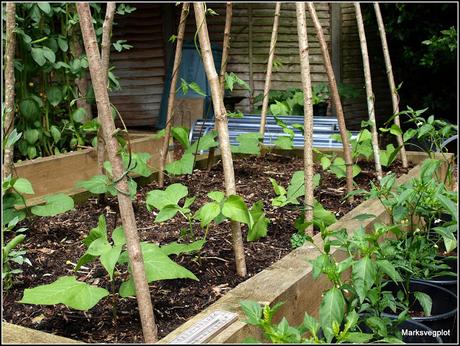
The first "piece of wisdom" I have to offer is this: make sure you provide your beans with a substantial frame to climb, because they can get very big. They produce a lot of heavy foliage (and hopefully pods!) This structure of mine is made with stout Hazel poles, about 9 feet long, with each pole pushed into the soil to a depth of about one foot.
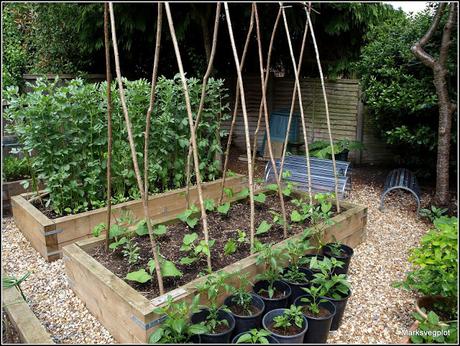
Runners like moisture-retentive soil (though they will grow reasonably well more-or-less anywhere), so make sure you incorporate lots of organic matter. Watering is also important because the big bean plants have a prodigious thirst. If you can, water at a time when the sun is not shining brightly, in order to minimize water loss through evaporation, and give the plants a big drink every few days rather than a sprinkle every day.
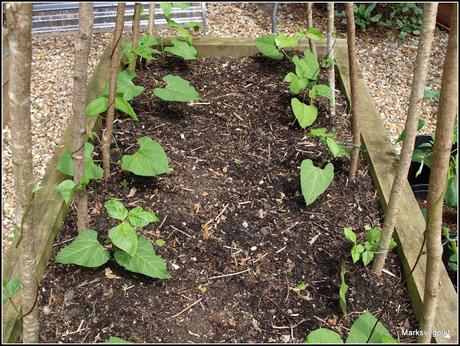
Most of my beans have grabbed hold of their poles without assistance, but just two of the 12 needed some encouragement. These two I tied very loosely to their poles with some soft string, initially with a big wide loop, and then re-tying the string a little more tightly once the beans were heading in the right direction.
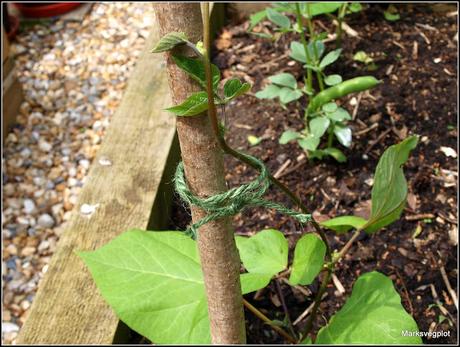
Another tip that I would like to mention concerns pinching-out. If you pinch out the growing tip of a bean plant this will encourage it to produce sideshoots, which normally emanate from the axils of the first pair of leaves. I pinch out my beans only when they reach the top of their support-frame, but I know that some people pinch-out when the plant is only 12 inches or so tall, which means that from a very early stage the plant gets TWO main stalks instead of just one. In theory, this means you get more pods, however I remain unconvinced.
Now, in the title of this post I mentioned a problem. It's the all-too-familiar problem of weedkiller-contaminated compost causing leaf-distortion. See how this leaf is sort of pleated or folded-over on itself:
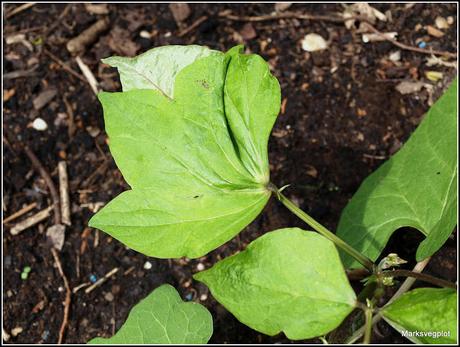
If you open it out, it looks like this. The concealed part is very wrinkled.

I'm not overly-concerned about this, because I think the plant is almost certainly going to be OK. I've seen a lot worse! It may look unsightly, but it probably won't affect the crop. However, it does confirm my suspicions that compost even from big-name suppliers continues to be contaminated. In this case I am certain where the contamination comes from. My beans were sown in Levington's John Innes No.2 compost, purchased from my local Garden Centre. Look at this pot containing my spares. Notice in particular the leaf at Top Right:
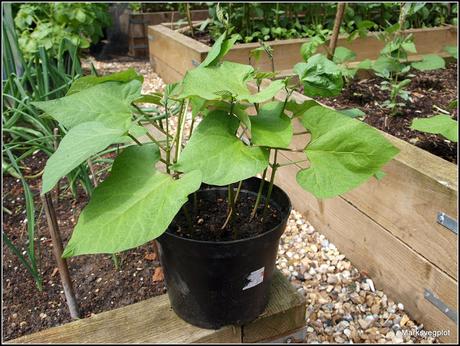
The beans in that pot have never been in any medium other than the compost I mentioned, yet some of the leaves are unmistakeably distorted. This is that "Top Right" leaf:
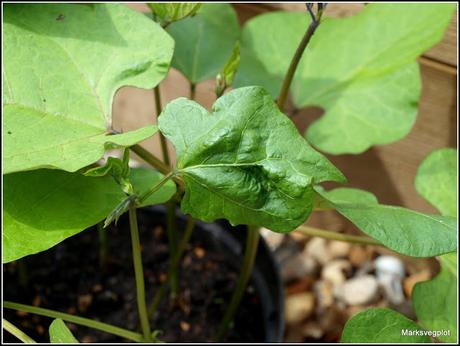
Many of my chillis (planted in the same compost) are showing the same symptoms.
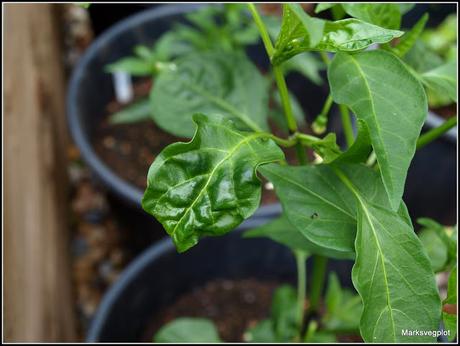
Again, not severe enough to be a big issue, but a concern nevertheless. Next year I think I will be looking for organic compost...
